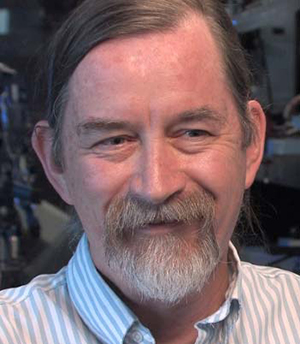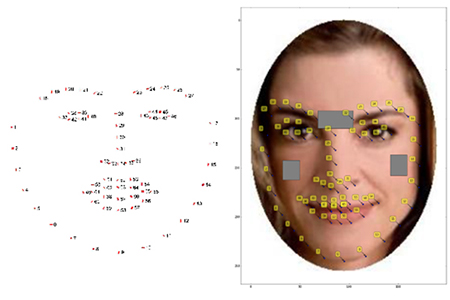
Computer Science Professor Honored for Cognitive Science Contributions
Published Date
By:
- Doug Ramsey
Share This:
Article Content

Computer Science and Engineering professor Gary Cottrell.
Computer Science and Engineering (CSE) professor Gary Cottrell calls himself "a cognitive scientist collecting a computer science salary", noting that this is “much better than the other way around.” Now, he has been elected a Fellow of the Cognitive Science Society, an honor reflecting his "impact on the Cognitive Science community and... sustained record of excellence in research contributions."
After earning his Ph.D. in Computer Science from the University of Rochester in 1985, Dr. Cottrell came to San Diego to do a post-doc at the Center for Human Information Processing with the mathematical psychologist David E. Rumelhart, one of the discoverers of the extremely popular backpropagation learning algorithm for neural networks. Following his post-doc, he was hired by the Computer Science and Engineering department, and has been teaching computer science at UC San Diego ever since.
The CSE professor is now being honored for his work in Cognitive Science, including the 12 years he has been Director of the UC San Diego-based Temporal Dynamics of Learning Center (TDLC), a National Science Foundation funded Science of Learning Center that he heads with Andrea Chiba of the Cognitive Science Department. At UC San Diego, Cottrell also directs the Interdisciplinary Ph.D. Program in Cognitive Science.
At the upcoming Cognitive Science Society annual meeting in London, Fellows in the Class of 2017 will be treated to a free dinner. Cottrell laments being elected this year, because his free dinner will be “British food.” However, always ready to see a silver lining, he notes that if he had been elected last year, when the conference was in Philadelphia, it would have probably been Philly cheesesteak (Cottrell is a vegetarian).
The annual meeting will run July 26th-29th, and this year's theme is “Computational Foundations of Cognition.” Cottrell has been a member of the meeting's program committee for decades, and was the program chair when it was held at UC San Diego in 1996.

In a paper on predicting social perceptions of faces, 68 face landmarks are labeled by dlib software automatically. The gray regions are used for computing smoothness and skin color.
Cottrell’s papers in this year’s conference include one entitled “Learning to See People Like People: Predicting Social Perceptions of Faces.” Cottrell's co-authors include first author Amanda Song, a Ph.D. student in Cognitive Science (co-advised by Cottrell); ECE alumna Linjie Li (M.S. '16), who is now doing her Ph.D. at Purdue University; and CSE junior Chad Atalla, a machine learning undergraduate researcher in the Cottrell Lab, where he studies facial attractiveness predictors. Humans make complex inferences on faces, ranging from objective properties (gender, ethnicity, expression, age, identity, etc.) to subjective judgments (facial attractiveness, trustworthiness, sociability, friendliness, etc.). While the objective aspects of face perception have been extensively studied, relatively fewer computational models have been developed for the social impressions of faces. Bridging this gap, Cottrell’s team developed a method to predict human impressions of faces in 40 subjective social dimensions, using deep representations from state-of-the-art neural networks. Cottrell notes that these subjective impressions do not necessarily reflect objective truth, but could be useful in social robots, who will need to understand how people view each other. This work could also be used to select your best Facebook profile image. The paper is available online from Cottrell’s publications page.
A second paper concerns the brain’s hemispheric asymmetries. Your left hemisphere’s visual system tends to process fine detail (AKA “high spatial frequencies”), while the right hemisphere responds best to low-resolution features (AKA “low spatial frequencies”). Due to the strange way your visual system is laid out, everything to the left of where you focus is directed to the right hemisphere and vice-versa, allowing visual psychophysicists to measure hemispheric differences by presenting stimuli to the left or right visual fields. Cottrell’s model (unlike previous ones) does not build in the fine detail/broad strokes difference between the hemispheres; rather, it falls out of building networks based on hypothesized connectivity differences between cortical patches within each hemisphere. In this paper, entitled “Categorical vs Coordinate Relationships Do Not Reduce to Spatial Frequency Differences,” Cottrell and colleagues employ his model to explain some classic data used by Stephen Kosslyn of Harvard to argue that the right hemisphere is better at metric tasks, while the left is better at categorical tasks, including data that does not fit Kosslyn’s theory. Authors of the paper include first author CSE M.S. student Vishaal Prasad (B.S. ’16, M.S. '17), Cognitive Science Ph.D. alumnus and former postdoc Ben Cipollini (now at Classy.org). This paper is also available online.
In addition to his credentials in both computer science and cognitive science, Cottrell earned his undergraduate degree from Cornell University with dual majors in two completely different disciplines: Mathematics and Sociology; his goal was to be the first Hari Seldon, the psychohistorian hero of Isaac Asimov’s Foundation Trilogy.
Share This:
You May Also Like
Stay in the Know
Keep up with all the latest from UC San Diego. Subscribe to the newsletter today.


